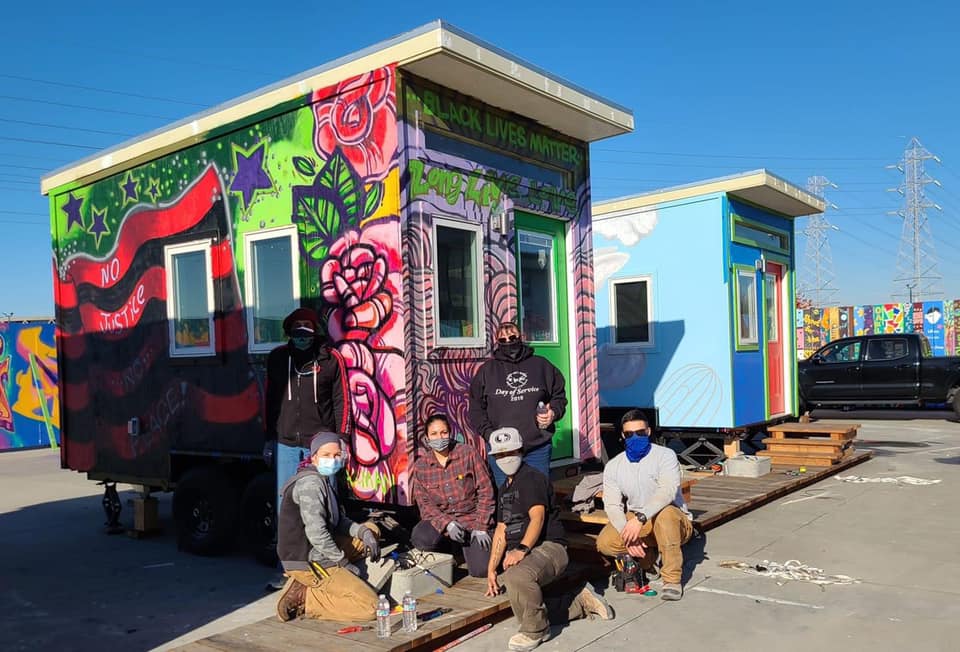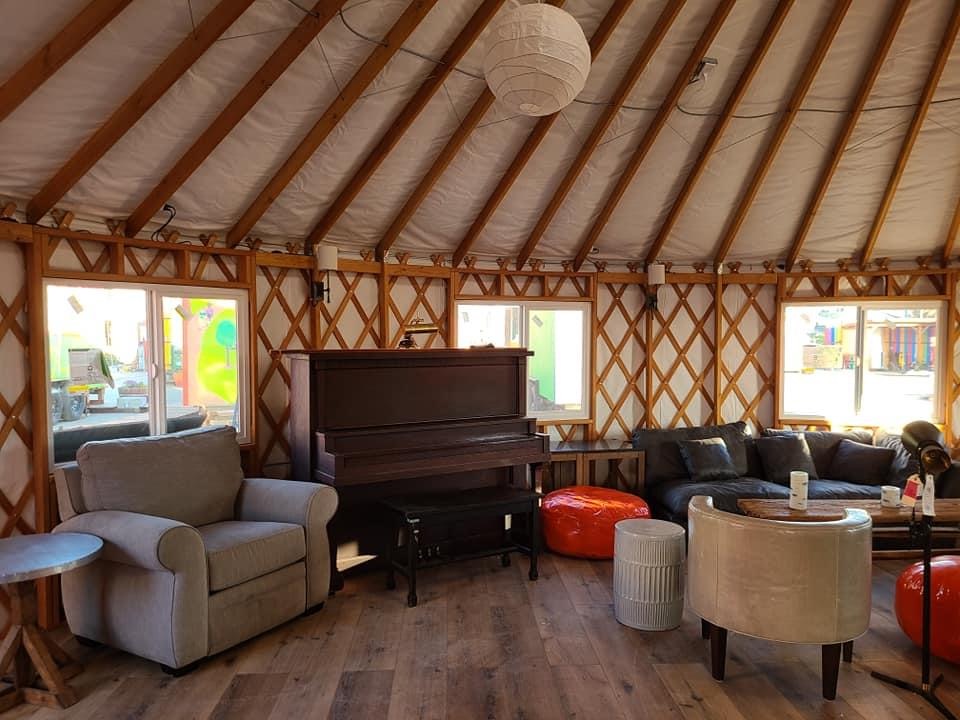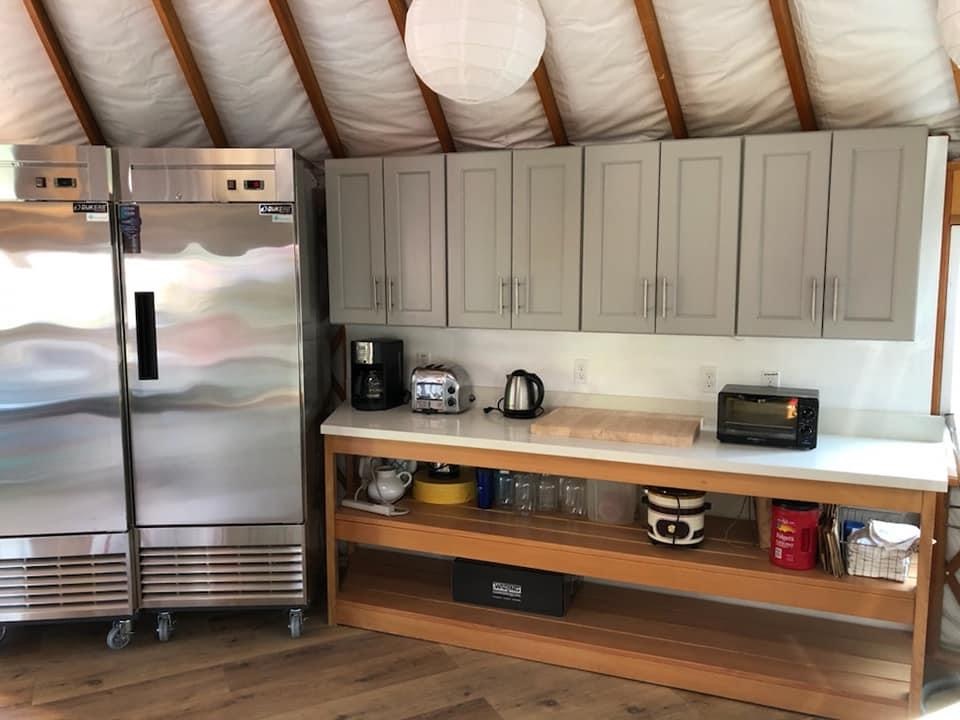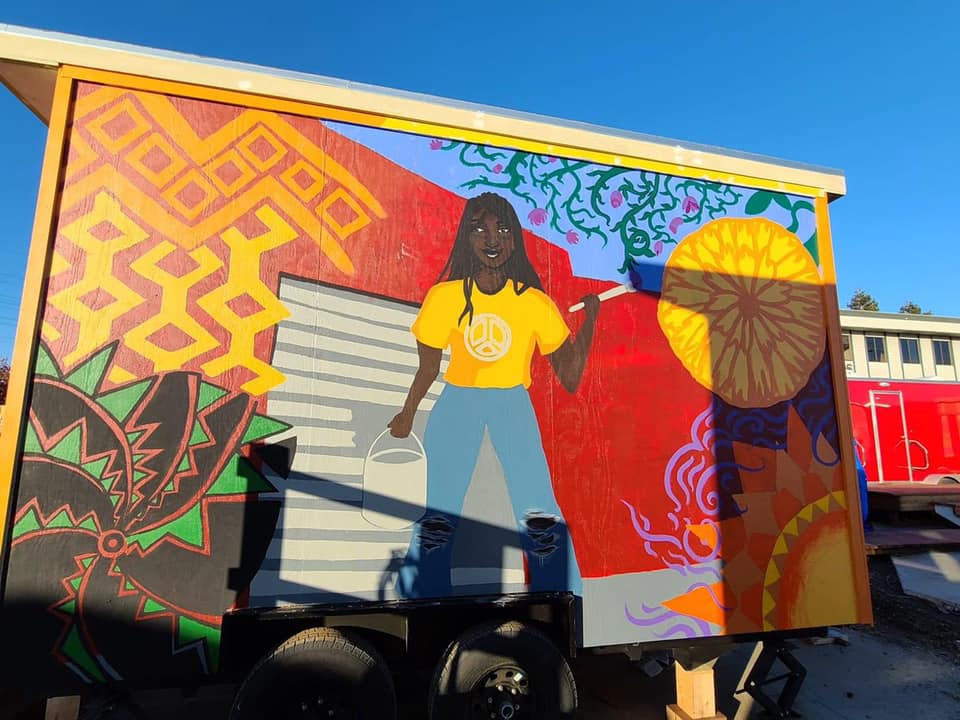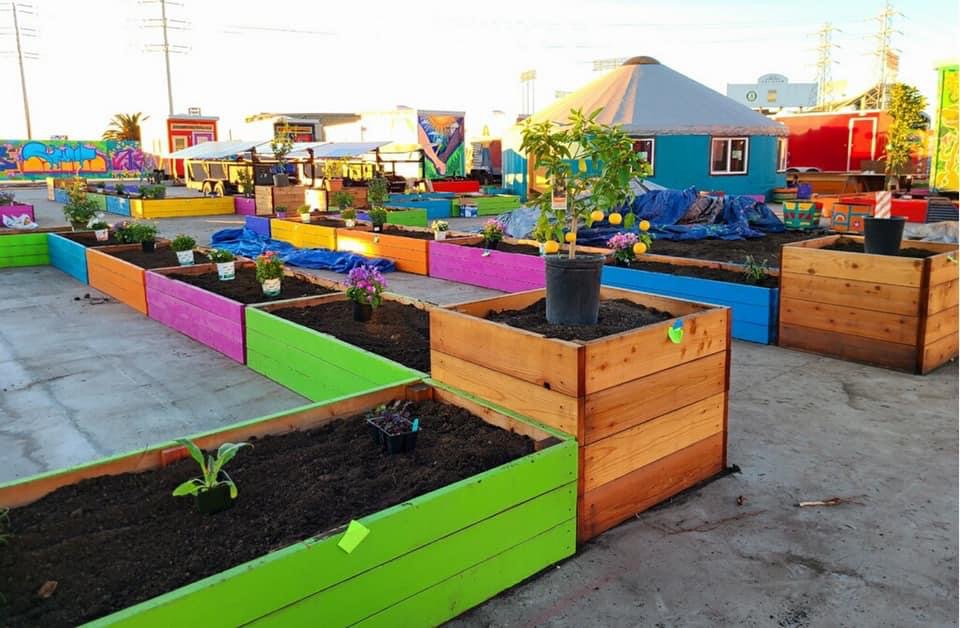The Oakland project will nearly double Alameda county’s capacity to serve homeless youth
A year ago, the spot on Hegenberger Road in Oakland’s industrial district was but a barren parking lot. Today, it is an art-drenched neighborhood of “tiny homes” created by a local nonprofit, the latest effort to address California’s youth homelessness crisis.
The 26 tiny homes, each measuring 8 feet by 10 feet, feature skylights, heated floors and custom Murphy beds that, when folded up, transform into a table. Each miniature house designed for one is painted in an array of bright colors and adorned with two full-wall murals draping the exterior, depicting everything from a serene moonlit mermaid scene to a bustling cityscape dotted with protest signs — all painted by local youth artists.
There are shared bathrooms and two community yurts: one filled with couches and armchairs like the common room of a college dorm, and the other a kitchen and dining space. Lines of colorful planter boxes snaking across the lot bear flowers, vegetables and fruit trees.
“This village is a metaphor for everyone realizing their vision for a cohesive, copacetic environment for people to grow,” said 20-year-old Sean McCreary, who developed the tiny home village project along with his peers at the nonprofit Youth Spirit Artworks.
The newly built homes are available to Oakland and Berkeley locals between ages 18 and 23 who are either homeless or at-risk, including youth aging out of foster care. Everyone who lives there will receive case management, job training and on-site access to medical and mental health care. The first 13 young adults moved in Feb. 19.
Homelessness among teens and young adults has been steadily on the rise for years across the nation. In California, 12,000 youth were homeless on a given night in 2019, according to the federal government. But until now, there were only 36 beds designated for homeless youth in Alameda County, home to the populous cities of Oakland and Berkeley, according to the East Oakland Community Project.
The 26 tiny houses will nearly double the county’s existing capacity to serve this group.
McCreary and fellow project leader Reginald Gentry said the idea for the project arose during a Youth Spirit Artworks group meeting while members were discussing the housing struggles they were facing in California’s costly Bay Area. Gentry said they “felt called” to work toward a solution.
“This was a problem the city wasn’t going to fix,” said McCreary, who has struggled with homelessness since childhood.
Members of Youth Spirit Artworks, who range in age from 16 to 25, designed the home and its custom features. When they began building prototypes, a steady stream of volunteers turned out to help. Those volunteers then served as project leads when they scaled up to build the full community.
To date, more than 2,500 people have pitched in.
“People bringing their kids, older people — everyone wanted to get their hands on building the tiny houses,” Gentry said. Even throughout the pandemic shutdowns, people continued to show up for socially distanced build days.
The project’s youth leaders wanted the collection of new homes to be a vibrant reflection of the community within and an asset to the surrounding neighborhood. They commissioned youth artists to adorn each house with murals and invited neighborhood residents to decorate the village fences. Painted prayers now honor Ruth Bader Ginsburg and Martin Luther King Jr. and offer blessings for future residents.
The homes are designed to meet young people’s specific needs. An on-site clinic opening soon will enroll youth in Medi-Cal and provide basic health care and mental health services. Each resident who moves in is given a bike with a lock and helmet so they have a reliable way to get around. It’s also situated just blocks from a public transit station.
The village cost $1.3 million to put together, largely donated by philanthropic foundations, local religious congregations and wealthy individuals. The city of Oakland, which has designated this as an official pilot project, footed the bill to have electrical infrastructure built and provided a no-cost lease for the first year. The year-one operating budget is $360,000.
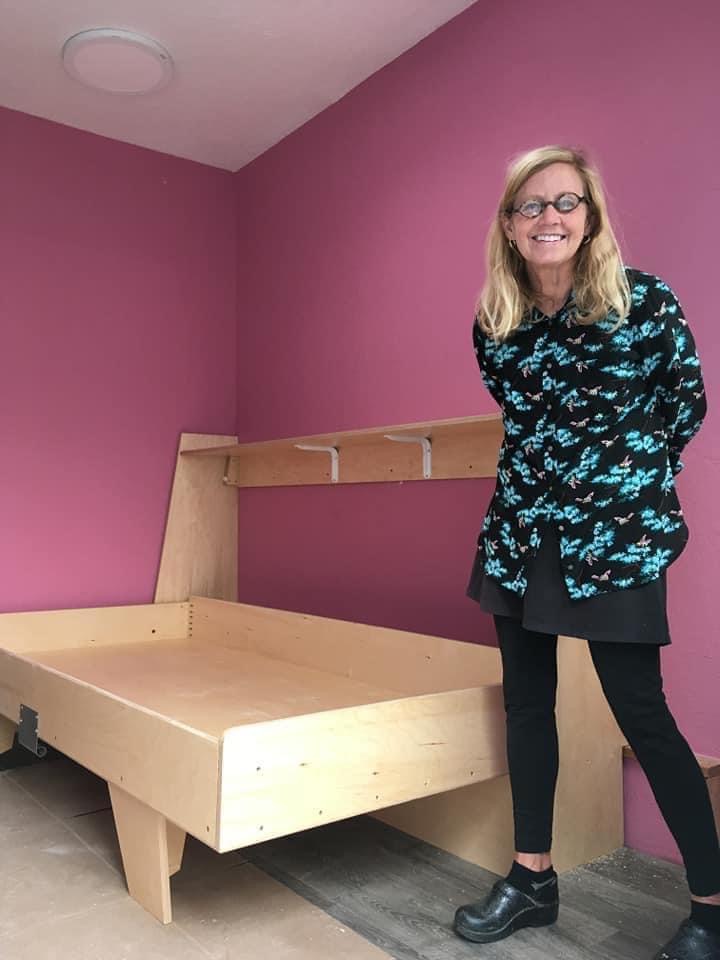
Youth Spirit Artworks is using a county system to match homeless people to available housing units and services, and to to screen applicants. Slots will be divided between youth from Berkeley and Oakland. Residents who have a job will be required to pay one-third of their income in rent.
Between the budget and scalability, the model is easily replicable, said Sally Hindeman, who founded Youth Spirit Artworks in 2007. The nonprofit is currently working with the California State University system to build a tiny homes village for struggling students at the Hayward campus. Leaders from several groups and jurisdictions have reached out to her for advice on how to do it themselves, from the nearby city of Richmond all the way to Chicago.
The key to success, she tells them, is for the people being served by the project to be the ones driving its design.
“This isn’t something that’s being imposed on homeless youth, but directly involved homeless youth from the get-go,” she said. “Deep ownership of the project, from the people being served, benefits everyone in the long run.”


